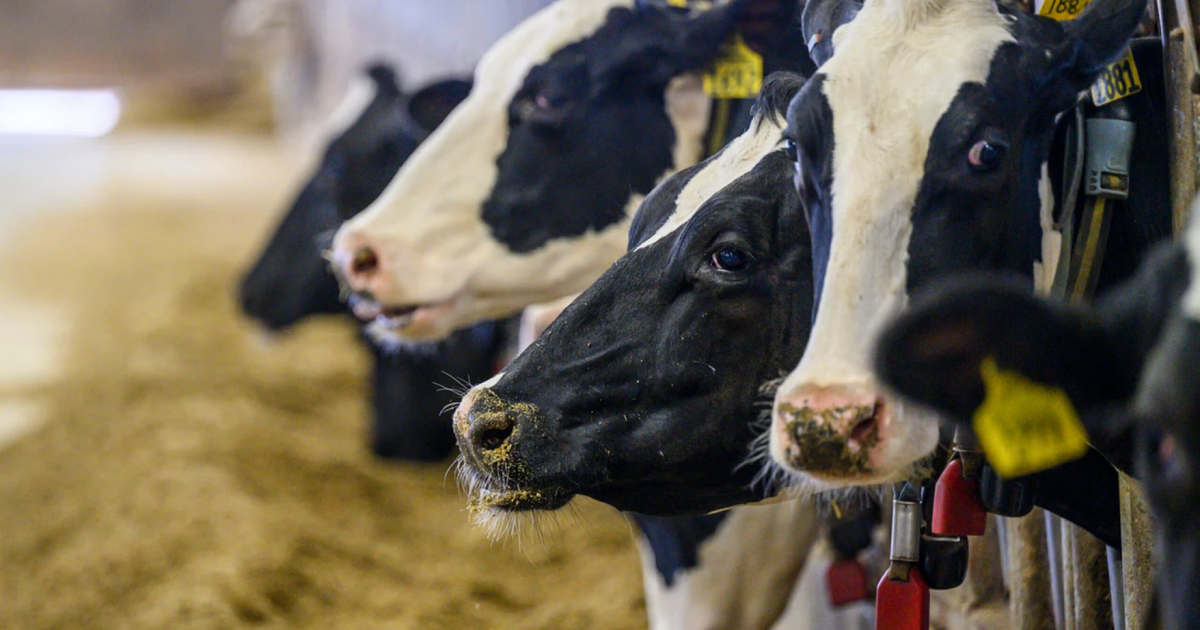Researchers from Dongguan University of Technology have developed a high-performance X-ray detector based on a graphene/perovskite heterostructure, addressing the limitations of traditional perovskite detectors that suffer from charge…
Blog
-

All you need to know about putting solar panels on your roof
Analysis: you can expect a simple system of six to eight solar panels to generate about one third of your home’s electricity needs
This article is now available above as a Brainstorm podcast. You can subscribe to the Brainstorm podcast via Apple Podcasts, Stitcher, Spotify or wherever you get your podcasts.
The proverb “Give a man a fish and you feed him for a day; teach him to fish and you feed him for life” has an unlikely resonance in the current fossil fuel crisis, especially when it comes to measures than are needed to help homeowners deal with soaring electricity costs. While giving someone a rebate or discount on their energy bill will help them once, giving them the power to generate their own electricity will endure for their lifetime. This is where an unlikely electricity source for Ireland, in the form of sunshine, could be a lifeline to many families struggling to pay energy bills.
Ireland is known more for wind and waves rather than sunshine, but advances in solar technology and reductions in cost now make it an attractive option for residential electricity generation in Ireland. Solar panels that produce electricity are known as solar photovoltaic (PV) modules. These panels generate electricity when exposed to light and it has been one of the fastest growing power generation technologies worldwide.
We need your consent to load this rte-player contentWe use rte-player to manage extra content that can set cookies on your device and collect data about your activity. Please review their details and accept them to load the content.Manage Preferences
From RTÉ News, a new study has found that solar panels could provide 25% of Ireland’s electricity needs
The systems produce electricity that can be used to power your home appliances and heat water via your immersion. The homeowner won’t notice any difference in how appliances work and there is no need to notify or change your electricity supplier.
Naturally, solar systems need sunlight to work but most will still function on overcast days in Ireland although not at their full capacity. You can expect a simple system of six to eight panels on your roof to generate about one third of your annual electricity needs, with most of this between the months of May and September. This means you will still be relying on your electricity supplier, especially in winter and darker months, but you will be buying less electricity from them overall.
Solar PV systems are sized in technical units called kilowatts (kW) and a simple 2.4kW system would have about six to eight panels. Most small systems of this size do not need planning permission, but you should check with your local authority as rules differ from location to location.
We need your consent to load this rte-player contentWe use rte-player to manage extra content that can set cookies on your device and collect data about your activity. Please review their details and accept them to load the content.Manage Preferences
From RTÉ Radio 1’s Morning Ireland, Dr Paul Deane on how over one million Irish homes have roofs suitable for solar panels
While the fuel in the form of sunlight is free, the installation of the panels isn’t and will cost about €4,000 for a simple system with six to eight panels [2.4kW]. There is a Government grant available to help reduce costs, bringing the overall price down to about €3,000. These are ballpark costs and will vary from supplier to supplier. If you are interested in getting solar panels, it is very important to shop around for several quotes and use a reputable certified installer.
A typical home with six to eight solar panels on the roof could save about €400 per year in electricity bills, with the system paying back for itself in seven to 10 years. The deployment of residential solar PV in Ireland addresses key energy and climate issues such as affordability but also helps Ireland at a national level in terms of Increasing security of supply and reducing the pollution from greenhouse gas emissions.
In UCC, we carried out a study, funded by the Irish Solar Energy Association, to understand how many homes can use sunlight to generate electricity. We were surprised to find that about half the homes in Ireland have potential for this technology and, if all this was achieved, we could produce enough electricity to meet a quarter of all residential electricity demand.
We need your consent to load this rte-player contentWe use rte-player to manage extra content that can set cookies on your device and collect data about your activity. Please review their details and accept them to load the content.Manage Preferences
From RTÉ Radio 1’s Today With Claire Byrne, would solar panels work for your home?
But there are very real challenges in rolling out this technology at scale at a national level. For a start, there is a shortage of skilled workers to do the work. Furthermore, while the economic and environmental arguments for the technology are very compelling, it still requires a significant upfront investment by the homeowner.
In this regard SEAI have a range of grants available to homeowners to reduce costs, but many families will still find the investment prohibitive. This is where Government policy needs to intervene and provide 100% grants to fund solar panels for homes in receipt of fuel allowance as low-income families need the highest level of financial protection during this crisis.
To get the best out of your panels, you will also have to change some behaviours about when you use appliances such as dishwashers and washing machines. If you have a solar system, it is best run these appliances when the sun is shining
We need your consent to load this rte-player contentWe use rte-player to manage extra content that can set cookies on your device and collect data about your activity. Please review their details and accept them to load the content.Manage Preferences
From RTÉ Brainstorm, all you need to know about putting solar panels on your roof
While some homeowners will look to put in a battery system to store any excess electricity, this adds to the costs. However, if you have a hot water or immersion tank, you can set up your solar system to divert surplus electricity to heat your water. In essence this acts like a battery and stores the electricity as hot water, which can be used to offset the use of the immersion for hot showers etc.
Any remaining electricity can be exported to the grid and homeowners can now get paid a small fee for this. But with current high electricity prices, it is best to use as much of your solar generated electricity in your own home as possible.
The views expressed here are those of the author and do not represent or reflect the views of RTÉ
Continue Reading
-

Full moon names 2026 (and how they came to be)
Many full moon names date back to Native Americans of what is now the northern and eastern United States. Those tribes of a few hundred years ago kept track of the seasons by giving distinctive names to each recurring full moon.
Their names were…
Continue Reading
-

Peterson Bringing ‘Servant Mentality’ to Defensive Coordinator Post
By: D. Scott FritchenHe’s a Texas A&M alum who faced the purple and white as a player and then as a member of the coaching staff, and later he served as defensive coach for four years at Kansas, but today, after a 36-hour whirlwind trip to see…
Continue Reading
-

The audacious plan to make rocket fuel on the moon
Despite being one of the coldest places in the cosmos, the moon’s surface may one day have multiple heat sources. Reflected sunlight is one option. Alternatively, both the U.S. and China also plan to put nuclear reactors on the moon so that…
Continue Reading
-

Team News: Dombrandt starts as five changes made for Saints – Harlequins FC
- Team News: Dombrandt starts as five changes made for Saints Harlequins FC
- Dowson ‘nervous’ ahead of Saints’ clash with ‘incredibly dangerous’ Harlequins Northampton Chronicle and Echo
- When you get the opportunity to pull on the shirt, you have to…
Continue Reading
-

Americans drank more milk in 2024, reversing a decade-long decline
For more than a decade, Americans have been steadily drinking less milk each year.
But the latest federal data show sales of milk beverages turned around in 2024, increasing by 358 million pounds or just under 1 percentage point from the previous year to 43.2 billion pounds.
It’s the result of a resurgence in sales of whole milk, which have been trending upward since 2014. The category saw a 3% increase from 2023 and helped offset the continued declines in most other categories, including reduced-fat and skim milk.
Whole milk has benefited from the diet craze around protein driven largely by health and fitness influencers, said Leonard Polzin, dairy markets and policy outreach specialist for the University of Wisconsin-Madison’s Division of Extension.
“The more protein, the better. Consumers are all about that,” Polzin said. “The other portion is kind of a shift towards healthy fats too. So for example, cottage cheese is having a real moment right now.”
Industry data shows whole milk consumption is up in both households with children and those without, according to Karen Gefvert, chief policy officer for Edge Dairy Farmer Cooperative, which represents farmers in Wisconsin and Minnesota.
Gefvert said whole milk has also benefited from increasing consumer interest in whole foods and foods that are minimally processed – a trend that has been promoted by the Trump administration’s Make America Healthy Again agenda.
“There are a ton of really great things in whole milk, and I think that’s resonating with consumers,” Gefvert said.
Federal data going back to 1975 show total U.S. milk sales peaked in 2009 at more than 55.4 billion pounds. That total steadily declined to a record low of 42.8 billion pounds in 2023.
Consumption of plant-based milk alternatives has declined in recent years. But Polzin said it’s hard to know if those consumers are making the shift to dairy or simply cutting back on drinking milk of any kind.
Polzin said increasing milk consumption is especially good for dairy farmers. That’s because milk sold as beverages, known in the industry as fluid milk, has a greater impact on the prices paid to farmers.
But Gefvert said this effect is not as prominent in states like Wisconsin, where most milk is processed into cheese and other products. She said most farmers in the state have a more subdued take on last year’s sales increase.
“It was not significant and is likely just sort of a pause in the inevitable continuous decline in fluid milk sales,” Gefvert said.
She said there is hope that whole milk sales in particular will continue to increase. Congress recently passed federal legislation to reintroduce the option to the National School Lunch Program, which currently requires schools to offer low-fat or skim milk to students. The Whole Milk for Health Kids Act is expected to be signed by President Trump.
Medical experts are divided on whether full fat dairy options, which contain high levels of saturated fat, negatively affect human health.
Earlier this year, a scientific panel that advises the federal government on dietary guidelines concluded there wasn’t enough evidence to change the existing guidance, which recommends Americans drink low-fat or skim rather than whole milk.
This story was produced in partnership with Harvest Public Media, a collaboration of public media newsrooms in the Midwest and Great Plains. It reports on food systems, agriculture and rural issues.
Continue Reading
-

The Sad Case of The Youngest Person Ever to Be Diagnosed With Alzheimer’s : ScienceAlert
In 2022, neurologists at a memory clinic in China diagnosed a 19-year-old with what they believed to be Alzheimer’s disease – making him the youngest person ever to be diagnosed with the condition.
The teen first began experiencing memory…
Continue Reading
-
Worcester Warriors | Bassett returns as Warriors head to Ealing
Josh Bassett makes his competitive Worcester Warriors debut as he returns from injury for the Warriors Round 13 trip to Ealing Trailfinders.
Bassett, who last featured against Bath in pre-season, starts on the wing as one of six changes…
Continue Reading
-

Welcome to the Future of Noise Canceling
This blurring of the lines between audio and health devices looks set to be a trend across the industry. “We really want to make sure that we take care of our customers’ hearing,” says Miikka Tikander, the Helsinki-based head of audio at…
Continue Reading